#australopithecus
Text
When I was a kid, my mom always hated that Candy Kong was a gorilla, but still had to have curves so you'd know she was the "girl" one. And yeah, fair, that's sexist as hell. But, recently, I got to thinking...
Is it ever explicitly said that Candy Kong is a gorilla?
Sure, she's a Kong, but that also encompasses Diddy and Dixie, who are apparently some kind of monkey and a chimp. To be a Kong, you just need to be a simian resident of Kong Island.
So. She's not a gorilla. She has the simian snout, and body hair, but she also has feet that are halfway between simian and human, long legs, and humanoid breasts...
My God.
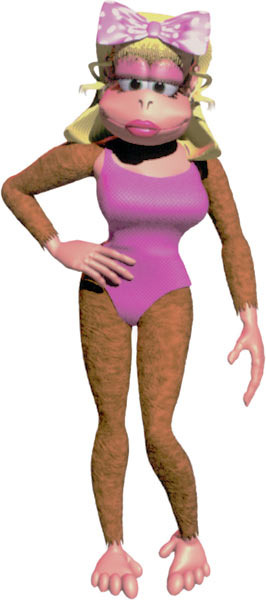
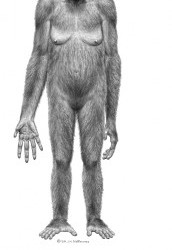
Candy Kong is an Australopithecus.
10K notes
·
View notes
Photo

A female australopithecus mourning the loss of her child to a dinofelis attack.
#my art#mammal#ape#prehistoric mammal#Prehistoric Life#Australopithecus#paleontology#paleoart#paleoillustration#Illustration#africa#animal#storm#rain#not#a#dinosaur
841 notes
·
View notes
Text
Let's take a closer look at the hominin skulls in the Senckenberg Museum's human evolution room. Keep in mind this is not a linear progression through our ancestors, and more like a bunch of closer and more distant cousins.


The first one, Sahelanthropus tchadensis is seven million years old, and may very well not be a hominin at all. I've always leaned towards the hypothesis that it's a gorilla relative, not one of ours. No matter which branch of the apes it belongs to, it lived not long after the time the human-line (hominins) and the chimp-line separated, and possibly even before that point!


Ardipithecus ramidus, the first hominin from where we can start making a fairly decent family tree of our relatives. Before this point, 5 million years ago, hominin fossils are very rare, fragmentary, and difficult to assign. One of the most interesting things that does seem to emerge from these early fossils is that we have walked on two legs for a long time. Maybe even so long that our common ancestor with the chimps and bonobos did it!

Lucy represents Australopithecus afarensis, who shows up at this point (3.3 million years ago).


Australopithecus africanus, the Taung child to be precise. We're about 2.8 million years ago at this point. Australopithecines must've been such fascinating creatures.
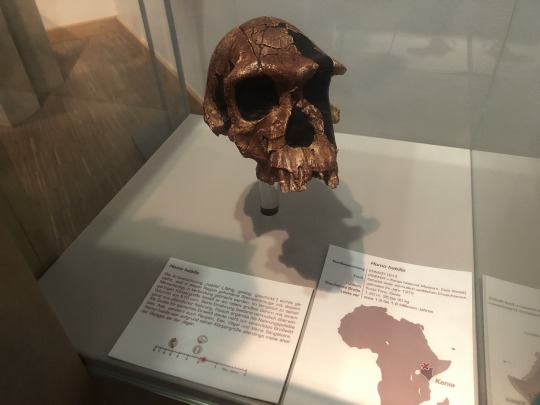

Homo habilis, the 'handy man', named that way because when they were discovered they were thought to be the first humans who used tools. Since then, Australopithecus tools have been found, and tool use by many different animals has also been documented.
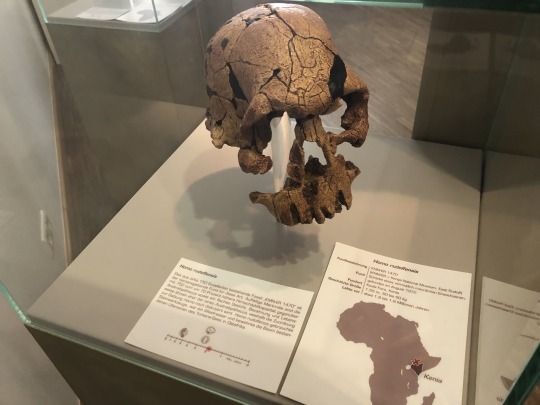

Homo rudolfensis, a population of humans who lived at the same time as Homo habilis and were notably bigger and a little brainier. Does it warrant being its own species? That depends who you ask. Splitting vs lumping is a point of contention in almost every group's biology, and it can run especially high in the field of human evolution since hominins are A very high profile and important fossils that directly relate to our own origins, and B an extremely tangled group that seems to have produced loads and loads of isolated populations and subspecies that regularly migrated all over the place and had frequent interbreeding events. Personally I tend to come down on the side of lumping them into a few major species.


Paranthropus boisei. These were basically a separate lineage of australopithecines, quite different from our own ancestors, who continued to do australopithecus things until quite recently. They were very good climbers and seem to have returned to the trees.

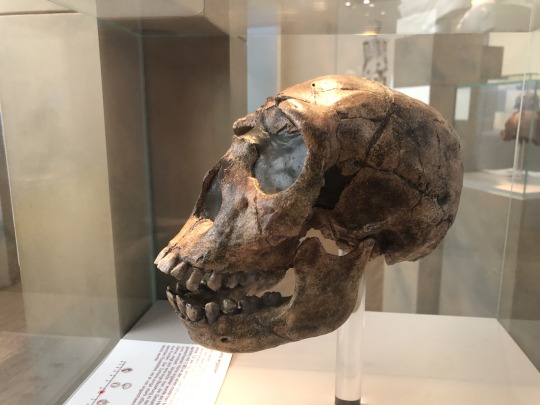
Homo ergaster, either a close relative or a synonym of the more famous Homo erectus. This is the point where we got really brainy, probably figured out how to make fire ourselves, and spread from Africa to Eurasia.

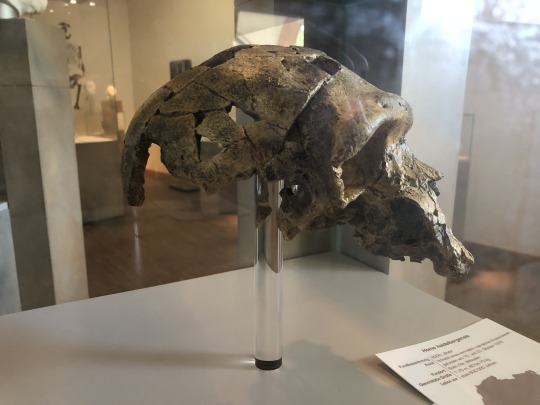
Homo heidelbergensis. Homo erectus and its many subspecies spread all over Africa and Eurasia and existed for well over a million years. As time marches on and evolution did its thing, we eventually start calling the ones in Africa Homo heidelbergensis. They were quite tall, positively enormous compared to little Lucy a few million years back, and they too joined in the human migrations out of Africa. From the H. heidelbergensis who moved into Eurasia we eventually get neanderthals and denisovans, while Homo sapiens evolved from the heidelbergensis populations in Africa.
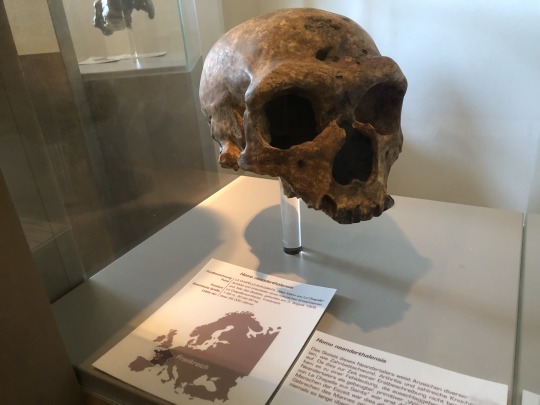

And there's the neanderthals! Large-brained and creative (the first known cave paintings belong to them and they buried their dead), they were likely quite different from the brutish image we often get from them. Rather than truly dying out, their populations eventually merged with the larger Homo sapiens population once they migrated out of Africa, leaving our modern genes with a couple percent neanderthal DNA.
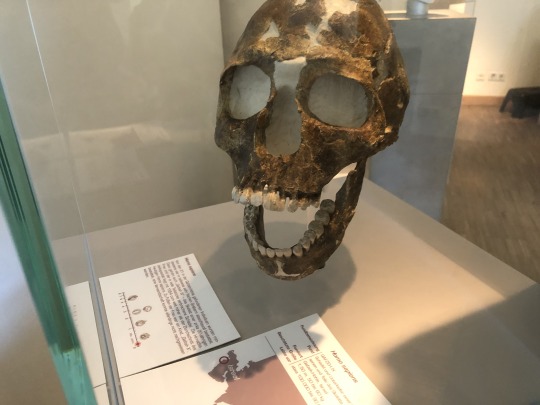
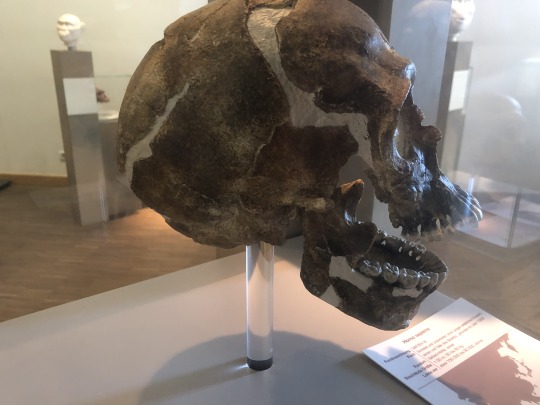
Homo sapiens. And that's us! Not so much the last remaining branch of the human family tree as much as several of the separate branches ended up coming back together and weaving into a single bigger branch.
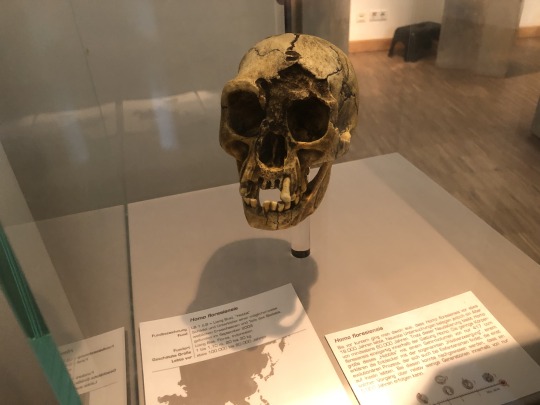

And then there's these little guys, Homo floresiensis! Probably originating from a Homo erectus population that ended up on the island Flores, insular dwarfism ended up making them grow quite tiny. On their isolated island, they remained until about 50000 years ago.
#human evolution#sahelanthropus#ardipithecus#australopithecus#homo#ape#primate#mammal#neogene#quaternary#palaeoblr#senckenberg museum#vicky's vritings
324 notes
·
View notes
Text
I loved these one

663 notes
·
View notes
Text
Time Travel Question 8: Ancient History I
These Questions are the result of suggestions from the previous iteration.
Please add new suggestions below if you have them for future consideration.
#Ancient History#Archaeology#Australopithecus#Ea-Nasir#Ur#Göbekli Tepe#Petroglyph#Paleolithic#Neolithic#Neanderthals
139 notes
·
View notes
Text

An illustration I made a while ago with PhyloPic silhouettes as part of my chapter on human evolution (“Three Histories of the Human Body”) in the anti-creationism volume God’s Word or Human Reason?.
This illustration is under the CC-BY 3.0 license. See here for more on this image.
Other diagrams I’ve made on evolution.
A paleofiction comic book series about much earlier human ancestors.
#paleontology#extinction#palaeontology#paleoart#prehistoric#biology#evolution#evolutionary biology#sciart#science#paleoanthropology#anthropology#hominidae#hominins#hominids#australopithecus#homo sapiens#homo neanderthalensis#neanderthal#homo erectus
98 notes
·
View notes
Text
Today, we Homo sapiens are the only human species around, but that wasn’t always the case. Before us many other species came and went, often with fascinating evolutionary traits.
26 notes
·
View notes
Video
I don’t think we give enough thought about just how brief our place as apex predators has been compared to millions of years our ancestors spent as humble foragers and regular prey.
(Footage from Out of the Cradle)
#paleobiology#anthropology#paleontology#ardipithecus#australopithecus#video#animals#nature#machairodont#saber tooth cat#spotted hyena#hyena#animal#paleoblr#prehistoric#prehistory#hominidae#hominid#walking with beasts#ape#primate#primatology#out of the cradle
215 notes
·
View notes
Text

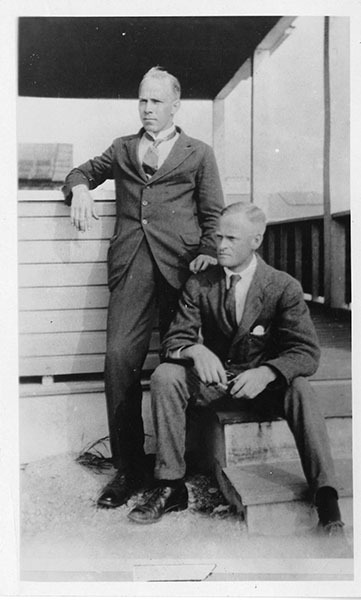
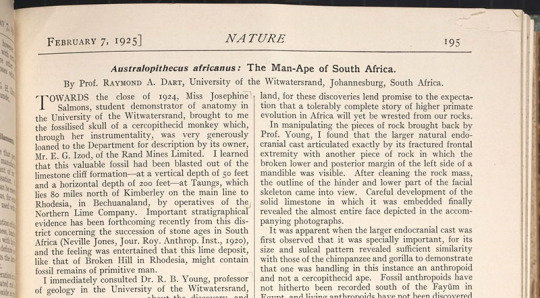
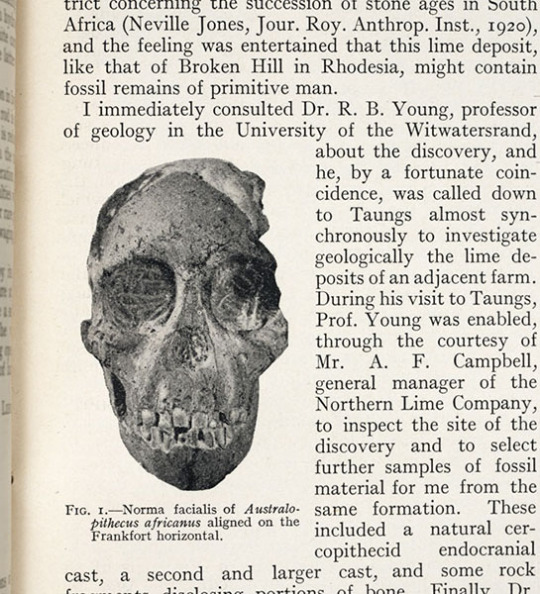

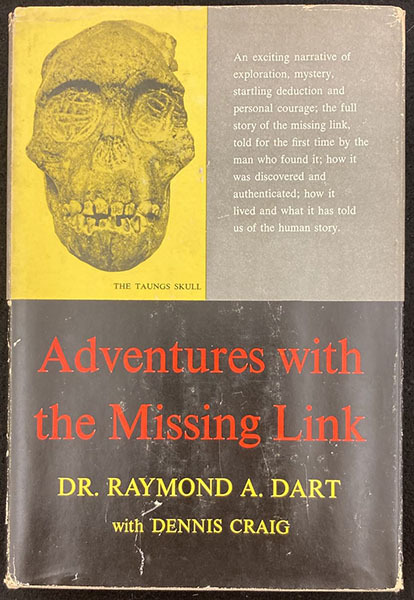
Raymond Dart – Scientist of the Day
Raymond Dart, an Australian/South African anatomist and anthropologist, died Nov. 22, 1988, at the age of 95.
read more...
#Raymond Dart#anthropology#Australopithecus#histsci#histSTM#20th century#history of science#Ashworth#Scientist of the Day
25 notes
·
View notes
Text
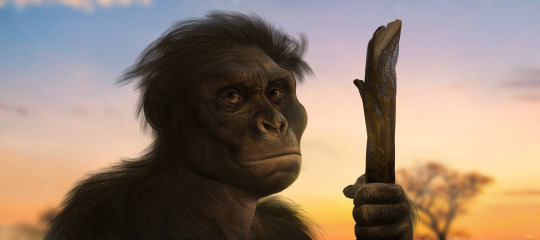
†Australopithecus afarensis
Art credit: Kepyle2055
Over the last few million years, a huge variety of hominins (human relatives) have arisen, only to go extinct and leave us all alone. A. afarensis lived from about 3.9-2.9 million years ago, and were short bipedal apes which were good at walking and might have been able to climb. They appear to have been highly adaptable, occupying a variety of environments- forest, savanna, etc- in east Africa. They likely ate a variety of foods, including grass, leaves, seeds, fruits, roots, insects, and small vertebrates.
#markhors-menagerie#primates#apes#great apes#hominins#animal facts#fun facts#palaeontology#animals#biology#prehistoric life#prehistoric animals#australopithecus#australopithecus afarensis
20 notes
·
View notes
Text
Midday ramblings,
You guys ever think about the australopithecus, and how they were designed to eat tubers, corms, and bulbs raw in times of need? And how modern homo sapiens do enjoy tubers, and bulbs especially garlic and onions, but when cooked?
#dear future ai#rambles#australopithecus#human evolution#evolutionary psychology#biology#agriculture#food history#anthropology#potatoes#onions#garlic#yams#midday ramblings
32 notes
·
View notes
Text

Australopithecus afarensis
#australopithecus#afarensis#australopithecus afarensis#john gurche#paleontology#lucy#paleo art#paleoartist#paleoanthropology#great apes#humans and hominids
57 notes
·
View notes
Video
youtube
I’ve been thinking about ancient hominids a lot lately so have A Man
4 notes
·
View notes
Photo
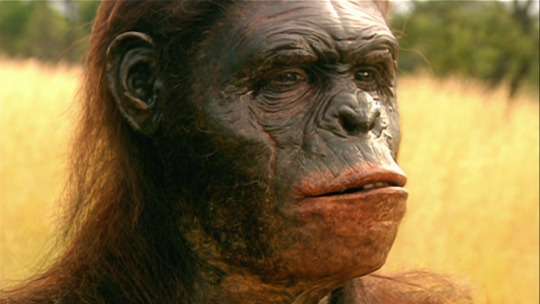



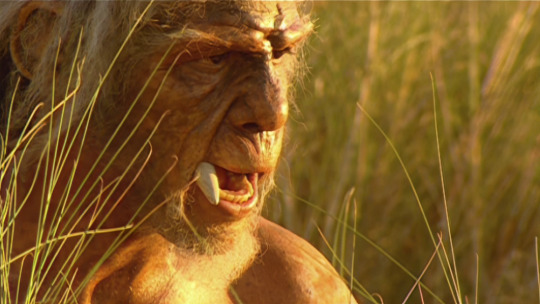

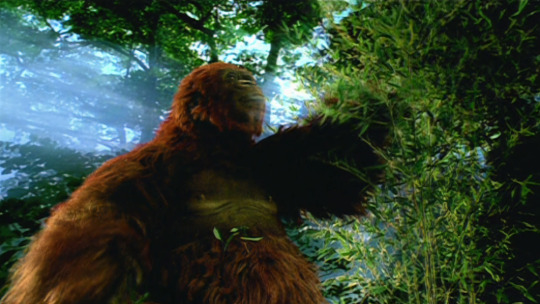

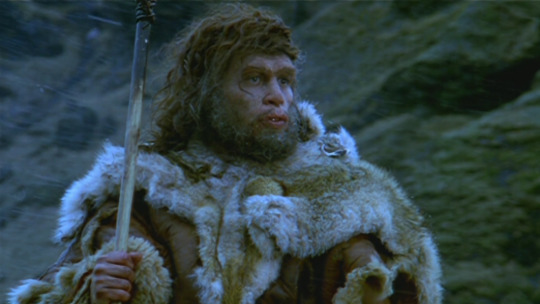
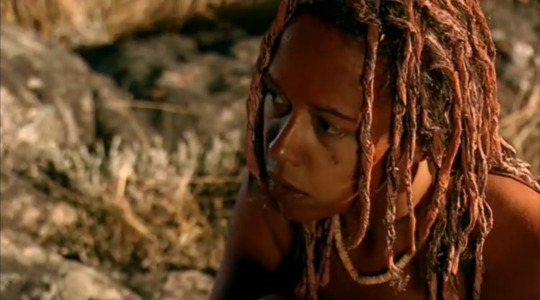
Meet your relatives: The hominids featured in Walking With Cavemen.
#walking with cavemen#walking with#human#australopithecus#paranthropus#homo rudolfensis#homo habilis#homo ergaster#homo erectus#gigantopithecus#homo heidelbergensis#neanderthal#homo sapiens#mine#the last one is lower quality because it was one of the few good forward-facing shots with modern humans in the last episode#and it's from the ending so it makes for a fitting note to end on#q
22 notes
·
View notes
Text
Australopithecus afarensis
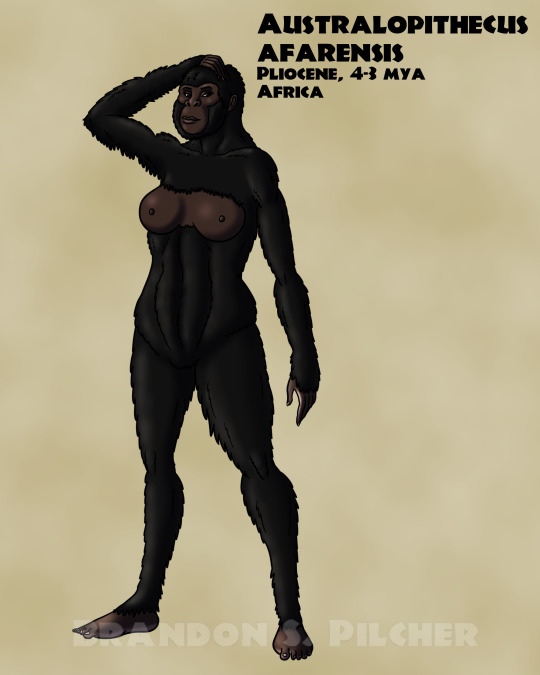
This is my rendition of "Lucy", a female specimen of the hominin species Australopithecus afarensis which lived in Africa between 4 and 3 million years ago, during the Pliocene Epoch. Like all hominins, Lucy would have been capable of walking upright, but her species's relatively long forelimbs and curved finger bones suggest a superior climbing ability to modern humans that they would have retained from earlier ape ancestors.
#australopithecus#hominin#hominid#human evolution#paleoanthropology#prehistoric#pliocene#paleoart#digital art#art
2 notes
·
View notes
Text
National Fossil: South Africa
Welcome back to my silly little paleontology poll about which fossils should represent each country. This time we're focusing on the African continent and right now on South Africa.
You know the drill: As always, it could be a fossil that is just exceptionally well preserved and beautiful, had a huge impact on paleontology and our knowledge of the past, is very common/representative of the area, is beloved and famous in the public eye, is just a very unique and interesting find, or has any other justification.
So here are our contestants:

Australopithecus africanus (Taung Child): As we‘re moving into Africa it should come to the surprise of absolutely nobody that the continent is covered in fossils telling us about our own human evolutionary history. The Taung Child, the skull of a young Australopithecus, was discovered in 1924, and as the first early hominin ever found, it sparked lots of controversy in the scientific community, as this was long before we had a good understand of the “ape-to-human“-transition: It took decades for Australopithecus to become fully accepted as an “early human“, but since then it has become one of the most important paleontological finds ever.
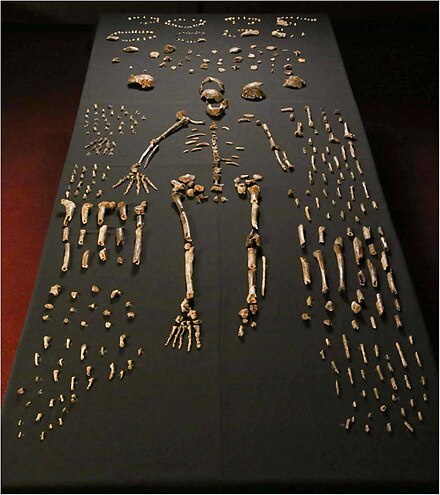
Homo naledi: A much more recent find is Homo naledi, discovered 2013 in a cave system. Even though the bones of at least 15 individuals have been found, these cousins of ours are still quite mysterious, as they show some archaic characteristics that seem out of place for how young the fossils are and more research needs to be done.


Lystrosaurus (Art by John Sibbick): Oh look, it‘s everyone‘s favorite mass extinction survivor! The small to medium-sized dicynodont (an early cousin of what would become the mammal line) made it through the Permian mass extinction, aka The Great Dying, seemingly unharmed - on the contrary: In the early Triassic they were so numerous that in some South African fossil sites more than 90% of all found material are Lystrosaurus!

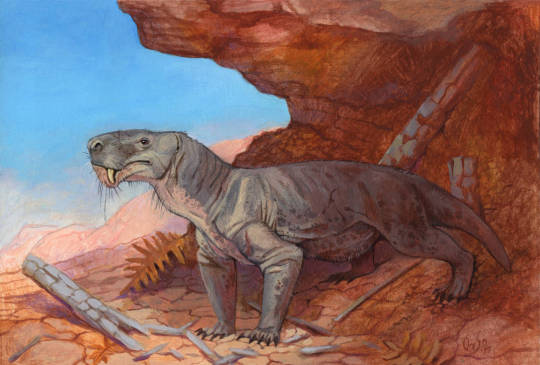
Inostrancevia (Art by OrsoMoretti): Someone who didn‘t made it through The Great Dying was Inostrancevia, but that doesn‘t make the 3 m long gorgonopsid (another “not-quite-a-mammal-yet“) any less impressive. Its most striking identifier were the 15 cm long sabertooth-canines. In that sense, gorgonopsids like Inostrancevia did their impression of sabertooth-cats over 200 million years before cats even became a thing.
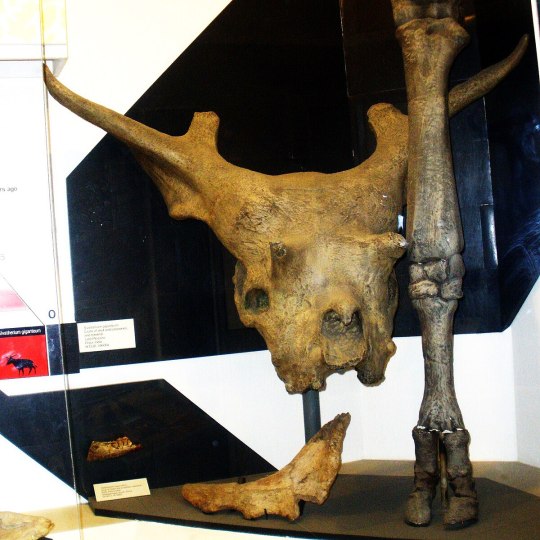

Sivatherium (Art by Jaime Chirinos): If you’d rather choose something that feels a bit more like a typical african animal, maybe just as a slightly more ancient version - South Africa of course doesn‘t disappoint here either: Sivatherium, a short-necked giraffe might hold a good balance between something that is recognizable enough to our modern eyes, yet strange and unusual enough to be a unique and interesting pick.
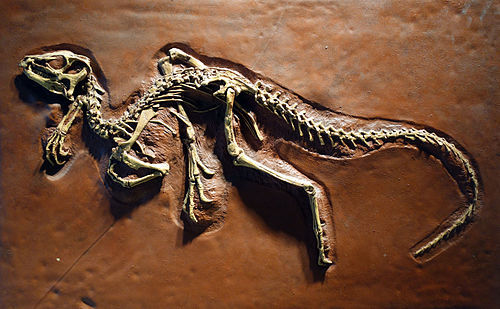

Heterodontosaurus (Art by Gregory S. Paul): Lastly, if you want to pick a dinosaur, South Africa provides you with some good finds on early dinosaurs: Heterodontosaurus lived during the early Jurassic and was a very basal member of the ornithischians, the same group that would later include such famous figures as Triceratops, Stegosaurus or Parasaurolophus. Apart from generally giving scientist a hard time placing it on the familiy tree, the small dinosaur is mostly known for its strangely shaped teeth, from which it got its name.
#paleontology#fossils#paleoblr#south africa#australopithecus#lystrosaurus#synapsid#inostrancevia#sivatherium#heterodontosaurus
2 notes
·
View notes